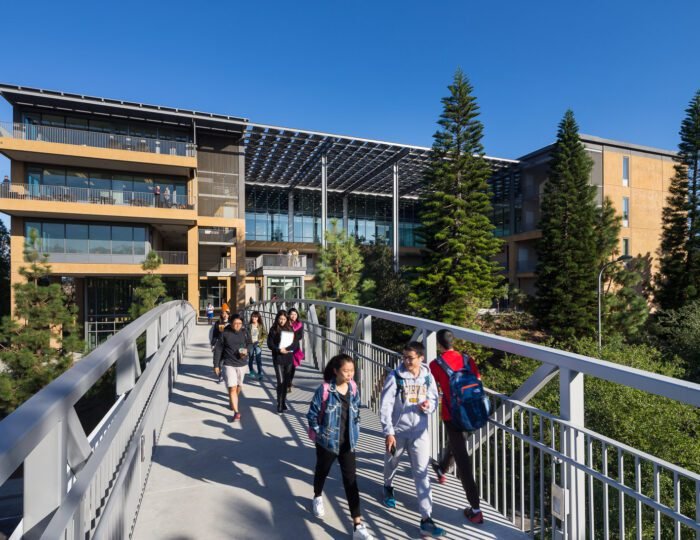Education buildings play a pivotal role in creating environments conducive to learning and development. These structures, ranging from schools to universities, are more than just physical spaces; they are hubs of knowledge, innovation, and collaboration. In this article, we explore the significance of education buildings, their design principles, and how they shape the future of education. We’ll discuss in this article education-building.
What Are Education Buildings?
Education-buildings encompass all types of structures designed for teaching and learning purposes. These include:
- Primary and Secondary Schools
- Colleges and Universities
- Vocational Training Centers
- Libraries and Research Facilities
- Community Learning Hubs
The Role of Education Buildings
Education-buildings serve several critical functions:
- Facilitating Learning: These structures provide students with spaces tailored to various educational activities, from lectures to hands-on experiments.
- Fostering Community: Schools and universities are social hubs where students, teachers, and staff collaborate and form connections.
- Inspiring Innovation: Modern facilities equipped with advanced technologies promote creativity and problem-solving. We’ll discuss in this article education-building.
Key Elements of Effective Education Building Design
Designing education buildings requires balancing functionality, aesthetics, and sustainability. Here are some essential design principles:
1. Flexible Spaces
Modern education buildings incorporate adaptable spaces to accommodate diverse teaching methods, from traditional lectures to group discussions and online learning.
2. Natural Lighting
Studies show that natural light boosts concentration and reduces fatigue, making it a critical element in classroom design.
3. Sustainability
Eco-friendly materials and energy-efficient systems help reduce the environmental impact of educational institutions.
4. Accessibility
Inclusive design ensures that students and staff with disabilities have equal access to facilities.
5. Technology Integration
Smart classrooms with interactive boards, Wi-Fi, and digital tools prepare students for a tech-driven world.
Notable Examples of Education Buildings
1. Harvard University’s Science and Engineering Complex (SEC)
A marvel of modern architecture, the SEC combines sustainable design with state-of-the-art research facilities.
2. The Diamond, University of Sheffield, UK
This building features innovative learning spaces, including computer labs, lecture theaters, and collaborative hubs.
3. Marina Bay Sands Design School, Singapore
Known for its futuristic design, this institution integrates nature and technology to inspire creativity. We’ll discuss in this article education-building.
The Impact of Education Buildings on Learning Outcomes
Well-designed education buildings directly influence students’ academic performance and overall well-being:
- Enhanced Focus: Comfortable and distraction-free environments improve concentration.
- Better Engagement: Interactive spaces encourage active participation.
- Mental Health Benefits: Open spaces and natural elements reduce stress levels.
Challenges in Education Building Development
While the benefits are clear, creating effective education buildings comes with challenges:
- Budget Constraints: Limited funding can hinder the construction of modern, well-equipped facilities.
- Rapid Technological Changes: Keeping up with the pace of innovation requires frequent updates to infrastructure.
- Sustainability Goals: Balancing environmental impact with functionality can be complex. We’ll discuss in this article education-building.
Future Trends in Education Building Design
The future of education buildings lies in innovative designs and technologies:
1. Green Buildings
Energy-efficient systems, solar panels, and sustainable materials are becoming standard.
2. Smart Campuses
IoT-enabled facilities that automate lighting, heating, and security enhance efficiency and safety.
3. Virtual and Augmented Reality
VR and AR labs are reshaping the way students learn, especially in fields like medicine and engineering.
Conclusion
Education buildings are foundational to the learning experience, influencing everything from academic outcomes to student well-being. By prioritizing thoughtful design, sustainability, and technological integration, these spaces can evolve to meet the needs of future generations.
Whether it’s a kindergarten classroom or a cutting-edge university lab, education buildings are the physical embodiment of a society’s commitment to knowledge and progress. We’ll discuss in this article education-building.
FAQs
1. Why is the design of education-buildings important?
A well-designed building enhances learning by creating comfortable, engaging, and functional spaces.
2. What is a green education-building?
Green education-buildings are eco-friendly structures that prioritize energy efficiency and sustainability.
3. How do technology-integrated classrooms benefit students?
They provide access to modern tools and resources, preparing students for a technology-driven world.
4. What challenges do education-buildings face today?
Key challenges include limited budgets, rapid technological changes, and meeting sustainability goals.
5. Are flexible spaces important in education buildings?
Yes, they allow for a variety of teaching methods and can adapt to changing educational needs.
Also read article on our website https://reflectiverealm.co/





One thought on “The Importance of Education Buildings: Shaping the Future of Learning”